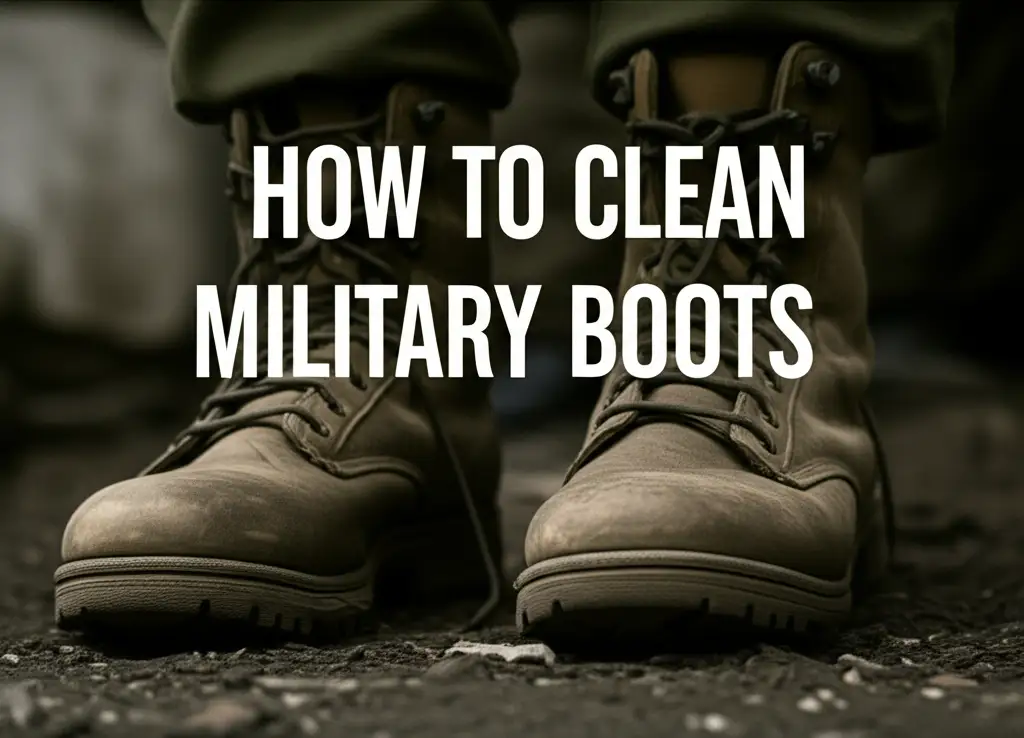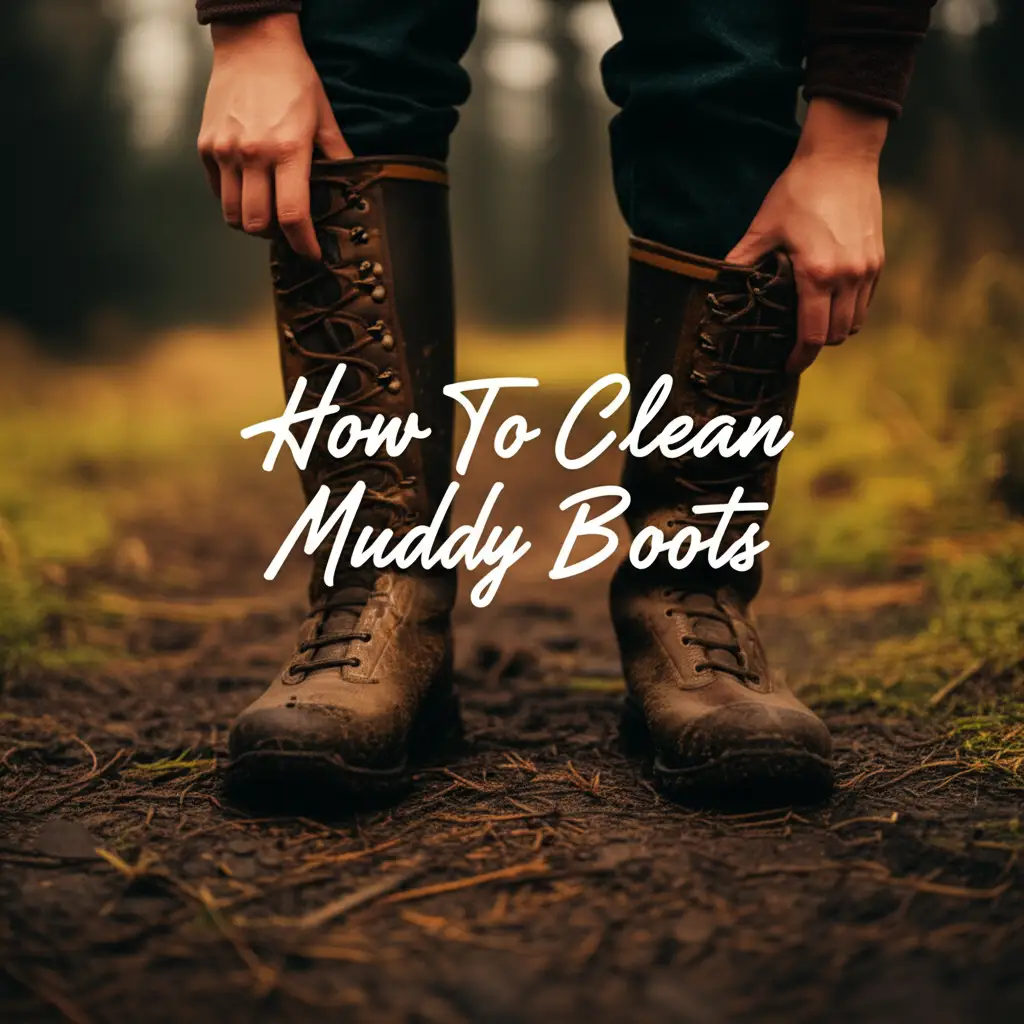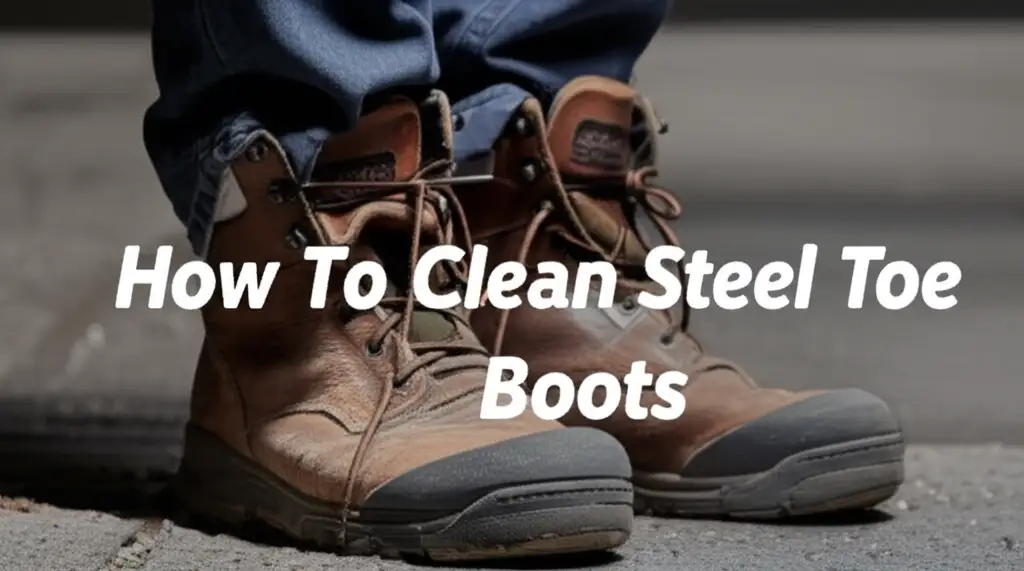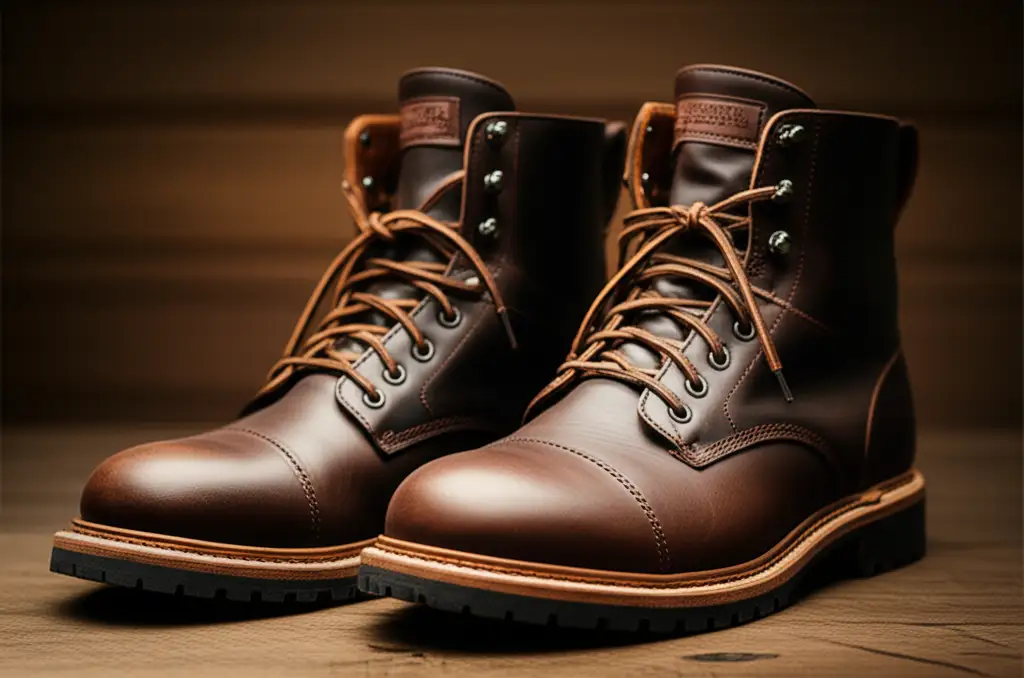· Footwear Care · 17 min read
How To Clean Military Boots

Mastering the Art: How To Clean Military Boots for Longevity
Military boots are more than just footwear. They are essential equipment. They protect your feet in demanding environments. These boots face mud, dirt, water, and rough terrain daily. Knowing how to clean military boots properly is not just about keeping them looking good. It is about extending their life. It ensures they perform their job well.
Proper care maintains the boot’s integrity. It prevents premature wear and tear. A well-maintained boot offers better support and comfort. This guide helps you understand the right way to clean different types of military boots. We will cover essential tools. We will explain step-by-step cleaning methods for various materials. We will also share tips for drying, conditioning, and protecting your boots. Follow these steps to keep your military boots in top condition, ready for any challenge.
Takeaway
- Regularly remove dirt and debris from your boots.
- Use specific cleaning methods for different boot materials.
- Always dry boots completely and away from direct heat.
- Apply conditioners and polish to protect and extend boot life.
To clean military boots, remove loose dirt. Wash them with cleaners suited for the material type, like leather or fabric. Rinse the boots well. Dry them away from heat. Condition leather parts. Polish for protection and a sharp look. This process makes boots last longer and keeps them professional.
Essential Tools and Preparations for Cleaning Military Boots
Before you begin the cleaning process, you need to gather the right tools. Having everything ready makes the job easier. It also ensures you clean your boots effectively. You do not want to stop mid-task to find a missing item. The right tools help you protect the boot materials.
First, find a good workspace. A garage, an outdoor area, or a utility room works well. Lay down old newspapers or a tarp. This protects your surface from dirt and water. You will be dealing with a lot of grime, especially if your boots have seen hard use. Preparing your area saves clean-up time later.
Gathering Your Cleaning Arsenal
Your cleaning kit should have several items. Each item plays a specific role in keeping your boots clean. You will need brushes, cloths, and appropriate cleaning agents. Do not use harsh chemicals unless specified for boots.
Here is a list of common tools you will need:
- Stiff brush: A stiff brush, like a utility brush or an old toothbrush, helps remove dried mud and debris. It works well on soles and tougher parts of the boot.
- Soft brush or cloth: For cleaning the main body of the boot. This helps apply cleaners gently without scratching.
- Boot cleaner: Choose a cleaner specific to your boot material. Leather cleaner, suede cleaner, or a general fabric cleaner are common types.
- Water: A bucket of clean water is essential for rinsing.
- Old towels or rags: Use these for drying and applying polish.
- Leather conditioner: If your boots are leather, a conditioner keeps them supple. It prevents cracking.
- Boot polish: For leather boots, polish restores shine and offers protection.
- Waterproofing spray: This helps repel water and protects against stains.
Make sure your cleaning agents are suitable for military-grade materials. Some boots have specialized coatings. Always check the boot’s care label if available. When your military boots are covered in mud, it is best to tackle the mud first. This makes the deep cleaning process much simpler. You can get more specific tips on dealing with heavy mud by learning how to clean muddy boots.
Preparing Your Workstation
Once you have your tools, set up your space. Lay out your protective covering. Arrange your brushes and cleaners within easy reach. Fill a bucket with clean water. Having everything organized makes your cleaning session efficient.
A well-prepared area also helps you focus on the task. You can work methodically through each step. This attention to detail improves the cleaning outcome. It ensures your military boots receive the best care. Your boots work hard for you. Give them the care they deserve.
Step-by-Step Guide to Cleaning Leather Military Boots
Leather military boots are durable. They need regular care to stay that way. Proper cleaning keeps the leather strong. It also helps your boots maintain their appearance. This section details the process for leather boots.
First, remove loose dirt. Use a stiff brush or an old toothbrush. Scrape off dried mud from the sole and sides. Pay attention to the treads. Dirt trapped there can reduce grip. Tap the boots together to dislodge more debris.
Next, wash the boots. Dampen a soft cloth with water. Add a small amount of leather cleaner to the cloth. Gently wipe the entire surface of the leather. Work in small sections. Do not soak the leather excessively. Focus on removing dirt and grime from the surface.
Once clean, rinse the boots. Use a new, clean, damp cloth. Wipe away any cleaner residue. Make sure no soap film remains. Leftover cleaner can dry out the leather. You want a clean surface for conditioning and polishing. These steps are similar to caring for other work-style boots. Cleaning how to clean steel toe boots involves similar techniques for durability.
Deep Cleaning and Conditioning
For deeper cleaning, you can use a dedicated leather saddle soap. Apply it with a damp sponge. Work it into a lather on the leather surface. This helps lift embedded dirt. Wipe off the lather with a clean, damp cloth.
After cleaning, let the boots air dry for a short time. The leather should be slightly damp, but not wet. This is the ideal time to condition the leather. Apply a good quality leather conditioner. Use a soft cloth. Rub the conditioner into the leather in small circles. This helps the leather absorb the product.
Conditioning replenishes natural oils. It prevents the leather from drying out. Dry leather can crack and become stiff. Proper conditioning keeps it flexible and strong. Pay special attention to creases and stress points. These areas need more moisture. Let the conditioner soak in for a few minutes. Then, buff off any excess with a clean cloth.
This step-by-step approach ensures your leather military boots remain in excellent condition. Regular cleaning and conditioning are key to their longevity. Your dedication here pays off in the long run.
Cleaning Suede and Fabric Military Boots
Military boots come in various materials. Some feature suede, others have fabric panels. These materials need different cleaning methods than leather. Using the wrong products can damage them. Understand the material before you start.
Suede boots have a napped surface. Dirt gets trapped in these fibers. Fabric boots can absorb stains easily. Both require gentle yet effective cleaning. Avoid using traditional leather cleaners or polishes on these materials.
For suede boots, begin by letting any mud dry completely. Once dry, use a suede brush. Brush vigorously in one direction to remove loose dirt. A suede eraser can help with scuffs and tough spots. Rub the eraser over the mark. This lifts the dirt from the nap.
To clean the entire suede surface, use a specialized suede cleaner. Follow the product instructions. Usually, you spray the cleaner on and then brush it in. Some cleaners are foam-based. Apply a thin layer. Then, gently brush the suede. Always brush in one direction to maintain the nap.
Fabric military boots often have nylon or synthetic components. These are generally easier to clean. Use a soft brush to remove loose dirt. Then, prepare a mild soap solution. Dish soap mixed with water works well. Dip a cloth or sponge into the solution. Wring out excess water. Wipe the fabric areas of the boot.
For stubborn fabric stains, you might use a specific fabric spot cleaner. Always test it on a hidden area first. This checks for colorfastness. Scrub gently with the cloth. Rinse the cloth often in clean water. Wipe away soap residue from the fabric.
After cleaning suede or fabric, drying is important. Do not place them in direct sunlight or use heat. Heat can shrink or damage these materials. Air drying is best. Stuff them with newspaper to absorb moisture. This also helps them keep their shape. Once dry, you can apply a waterproofing spray designed for suede or fabric. This adds a layer of protection. It helps repel future dirt and water. Proper care keeps these materials looking good and lasting long.
Addressing Tough Stains and Odors in Military Footwear
Military boots face many challenges. They often get tough stains and develop strong odors. Mud, oil, grease, and even salt can leave marks. Odors come from sweat and bacteria. Addressing these issues makes your boots clean and fresh.
Mud stains are common. If mud is still wet, scrape off as much as possible. Let the remaining mud dry completely. Once dry, use a stiff brush to remove the dried clumps. For mud embedded in the material, you might need a damp cloth with mild soap. Gently scrub the stained area. For heavy mud issues, you can get specific guidance on how to clean muddy boots. This link offers detailed steps for different types of mud.
Oil and grease stains are trickier. Start by blotting excess oil with a paper towel. Do not rub. Rubbing spreads the stain. For leather, use a small amount of leather degreaser. Apply it carefully to the stain. Follow the product instructions. For fabric boots, a strong dish soap can work. Apply a drop directly to the stain. Gently rub with a soft brush. Rinse thoroughly with a clean, damp cloth. You may need to repeat this process.
Salt stains often appear as white lines on boots. These happen in cold weather. Mix equal parts white vinegar and water. Dampen a clean cloth with this solution. Gently wipe the salt stains. The vinegar helps dissolve the salt. Wipe with a clean, damp cloth afterwards to remove vinegar residue.
Odors in military boots come from bacteria. Sweat builds up inside the boot. This creates a breeding ground for germs. To combat odors, start with thorough cleaning. Remove the insoles. Wash them separately if they are washable. Spray the inside of the boot with a disinfectant spray. Look for products designed for footwear.
You can also use natural deodorizers. Baking soda is effective. Sprinkle a generous amount inside the boots. Let it sit overnight. The baking soda absorbs odors. In the morning, shake out the powder. Coffee grounds or activated charcoal also work. Place them in old socks or sachets inside the boots. Leave them for a day or two. Proper drying after each wear is also critical. Damp boots encourage odor-causing bacteria.
Addressing these tough issues keeps your military boots clean and hygienic. It improves their comfort and extends their usable life.
Drying and Conditioning: Critical Steps for Military Boot Longevity
After cleaning your military boots, drying them properly is crucial. Incorrect drying can cause serious damage. It can shrink leather, crack materials, or foster mold growth. Proper drying methods ensure your boots stay strong and comfortable. Conditioning then restores material health.
Never dry military boots with direct heat. Avoid placing them near radiators, fireplaces, or in direct sunlight. High heat causes leather to dry out too quickly. This leads to cracking and stiffness. It can also melt glues and synthetic materials. Always opt for air drying at room temperature.
To dry boots effectively, start by removing the insoles and laces. This allows air to circulate freely inside the boot. If the boots are very wet, stuff them with newspaper. The newspaper absorbs moisture. Change the paper every few hours as it gets damp. This speeds up the drying process. Once the initial moisture is gone, remove the newspaper. Let the boots air dry completely. Place them in a well-ventilated area. A fan can help air movement. Point it towards the boots, but not too close.
Once your boots are fully dry, conditioning is the next vital step, especially for leather boots. Leather loses its natural oils over time and with exposure to water. Conditioning restores these oils. This keeps the leather supple and prevents it from cracking. Use a high-quality leather conditioner. Apply it with a clean, soft cloth. Rub the conditioner into the leather in circular motions. Ensure even coverage. Pay attention to areas that bend or flex a lot. These areas need more care.
Allow the conditioner to soak into the leather for about 15-20 minutes. Some products may require more time. Check the product instructions. After soaking, buff off any excess conditioner with a clean cloth. The leather should feel nourished but not greasy. Conditioning not only protects but also enhances the look of your boots. Many durable boots, like how to clean Blundstone boots, benefit from regular conditioning to maintain their longevity and appearance. This approach ensures your military boots remain durable and ready for action.
This dual process of proper drying and consistent conditioning significantly extends the life of your military boots. It protects your investment and ensures your gear performs when you need it most.
Polishing and Protecting Your Military Boots for a Professional Finish
Polishing military boots is more than just making them shiny. It adds a protective layer. This layer shields the leather from water, dirt, and scuffs. It also maintains a professional appearance. This is especially important for military personnel. A well-polished boot reflects discipline and attention to detail.
First, choose the right polish. For black leather military boots, black shoe polish is standard. You can find wax-based or cream-based polishes. Wax polishes offer a higher shine and better water resistance. Cream polishes condition the leather more deeply. You might use both.
Before applying polish, ensure your boots are clean and dry. Any dirt or conditioner residue will affect the polish. Use a small amount of polish on a soft cloth or a special polish applicator brush. Apply the polish in small, circular motions. Work it into the leather evenly. Do not use too much at once. Thin, even coats are best.
For a high shine, often called a “spit shine,” apply very thin layers. Then, use a damp cotton ball or cloth. Gently rub the polished area in small circles. This melts the wax slightly and spreads it evenly. Allow each layer to dry for a few minutes before adding the next. Repeat this process multiple times. You will see a glossy finish develop. Pay extra attention to the toe cap and heel. These are the most visible parts.
After polishing, consider adding a waterproofing layer. Many polishes offer some water resistance. For extra protection, a dedicated waterproofing spray works well. Apply it evenly over the boot surface. Follow the product instructions for drying time. This creates a barrier against water and stains. It keeps your feet dry in wet conditions.
Regular polishing is a key part of military boot maintenance. It keeps the leather protected. It also helps your boots pass inspection. A well-cared-for boot performs better and lasts longer. It reflects the dedication you put into your equipment.
Regular Maintenance and Storage Tips for Military Boots
Caring for military boots is not just about deep cleaning. Daily habits and proper storage also play a big role. Consistent maintenance can prevent major damage. It extends the life of your boots significantly.
After each wear, quickly brush off loose dirt. A simple dry brush can do this. This prevents dirt from building up or working its way into the material. If your boots get wet, let them air dry as soon as possible. Remove insoles to speed up drying. Never leave them in a damp, confined space. Dampness leads to mold and odors.
Check your boots regularly for signs of wear. Look for scuffs, cracks, or loose stitching. Addressing small issues early prevents them from becoming big problems. For example, a small crack in leather can widen if not treated. A loose stitch can unravel the seam. You can use leather repair kits for minor damage. For significant damage, consider professional boot repair services. They can often resole boots or fix major tears.
Proper storage is also crucial. Store your military boots in a cool, dry place. Avoid direct sunlight or extreme temperatures. These can degrade materials over time. Do not store boots in plastic bags. This traps moisture and prevents air circulation. Instead, use a breathable storage solution.
You can use boot trees or stuff your boots with newspaper. This helps them maintain their shape. It prevents creases and sagging. Boot trees are designed to keep the shaft upright and fill the foot area. This reduces stress on the material. If you have limited space, stand them upright on a boot rack.
For long-term storage, ensure boots are completely clean and dry. Apply a final layer of conditioner and polish. This prepares them for storage. Place them in a breathable shoe bag or box. This protects them from dust and pests.
Regular maintenance saves you time and money. It avoids the need for frequent replacements. By following these simple habits, your military boots will stay ready for duty. They will provide reliable service for many years. This careful attention shows respect for your gear. It ensures your boots serve you well in every situation.
FAQ Section
How often should I clean my military boots?
Clean your military boots as needed based on use. If they get muddy or dirty, clean them immediately. For general wear, a thorough cleaning every few weeks or once a month is good. Polish leather boots regularly to maintain protection and shine. Frequent cleaning prevents dirt buildup and extends boot life.
Can I use a washing machine to clean military boots?
No, do not use a washing machine for military boots. The agitation and heat can damage leather, adhesives, and internal structures. It can cause shrinkage, cracking, and sole separation. Always clean military boots by hand following the specific care instructions for their materials.
What’s the best way to waterproof military boots?
The best way to waterproof military boots depends on the material. For leather, use a wax-based polish or a dedicated leather waterproofing cream. For fabric and suede, use a silicone-based or aerosol waterproofing spray designed for those materials. Apply products evenly and allow them to dry completely for full protection.
How do I remove deep scratches from leather military boots?
For deep scratches on leather military boots, clean the area first. Then, apply a small amount of leather filler or a specialized leather repair compound. Let it dry. Buff the area smooth. Follow with a matching leather dye or polish to blend the repair. For very deep damage, professional repair might be needed.
My boots smell bad, how do I get rid of the odor?
To remove odor from military boots, take out the insoles. Let the boots air out in a well-ventilated area. Sprinkle baking soda inside each boot and leave it overnight to absorb odors. You can also use boot deodorizer sprays or activated charcoal inserts. Ensure boots dry completely after each use to prevent new odors.
What are common mistakes when cleaning military boots?
Common mistakes include using a washing machine, drying with direct heat, using harsh chemicals not suited for the material, and neglecting conditioning. Over-polishing without cleaning can trap dirt. Not drying thoroughly can lead to mold. Always use appropriate products and methods for your specific boot material.
Conclusion
Keeping military boots clean is a vital part of owning them. It is not just about looks. It is about their function and how long they last. We covered the necessary tools you need. We walked through specific steps for cleaning different materials, like leather, suede, and fabric. We also talked about how to tackle tough stains and bad smells.
Proper drying and conditioning are crucial after cleaning. They keep your boots flexible and strong. Polishing adds protection and a sharp finish. Regular maintenance and smart storage will keep your boots ready for anything. Remember, “How To Clean Military Boots” is a skill. It helps you maintain this essential gear. Use these methods to ensure your boots serve you reliably, trip after trip. Start your boot cleaning routine today. Your feet and your boots will thank you.
- military boots
- boot cleaning
- leather care
- combat boots
- boot maintenance




